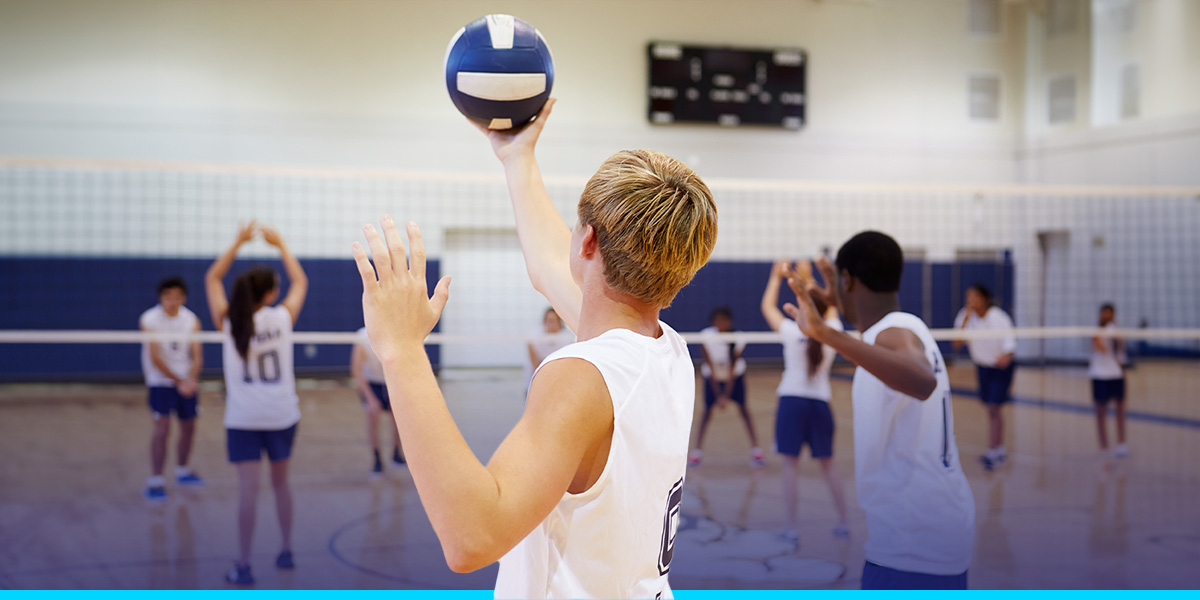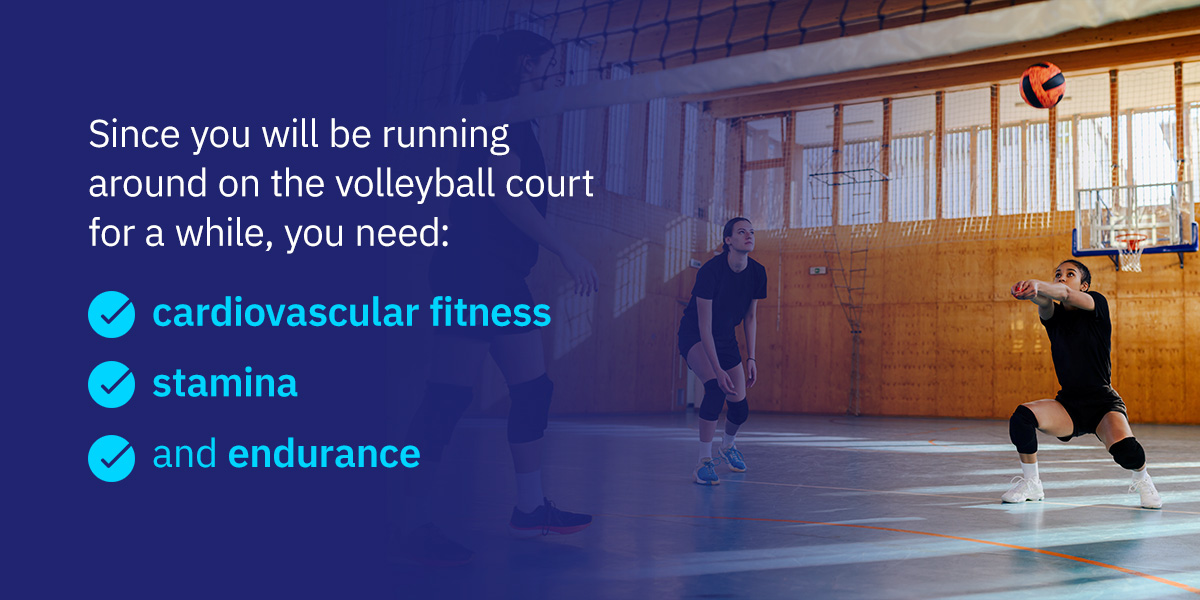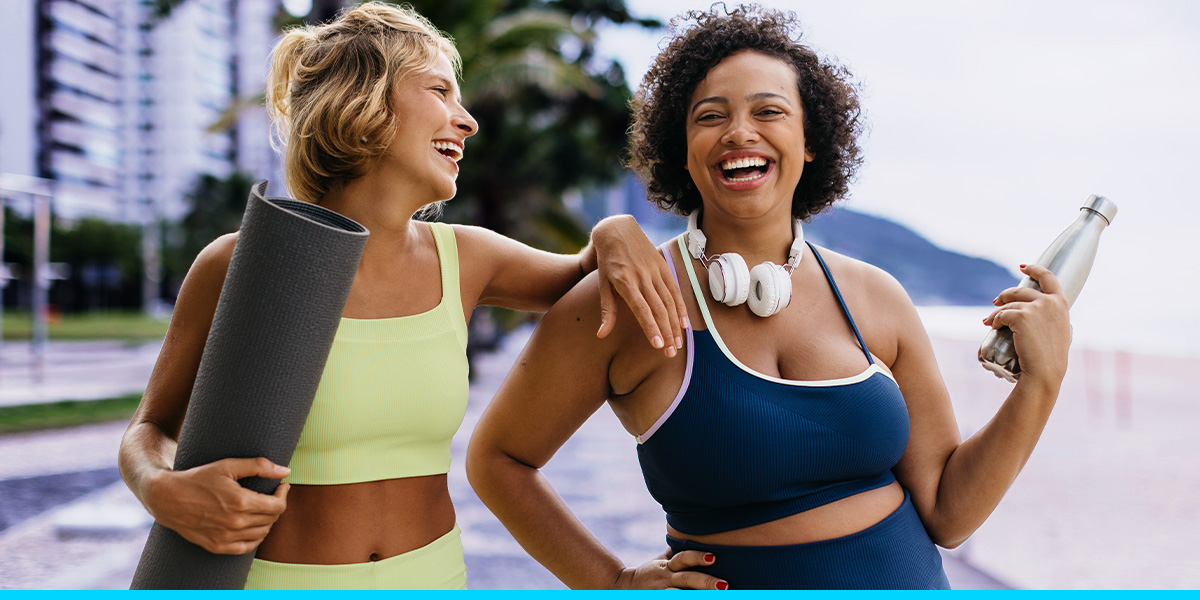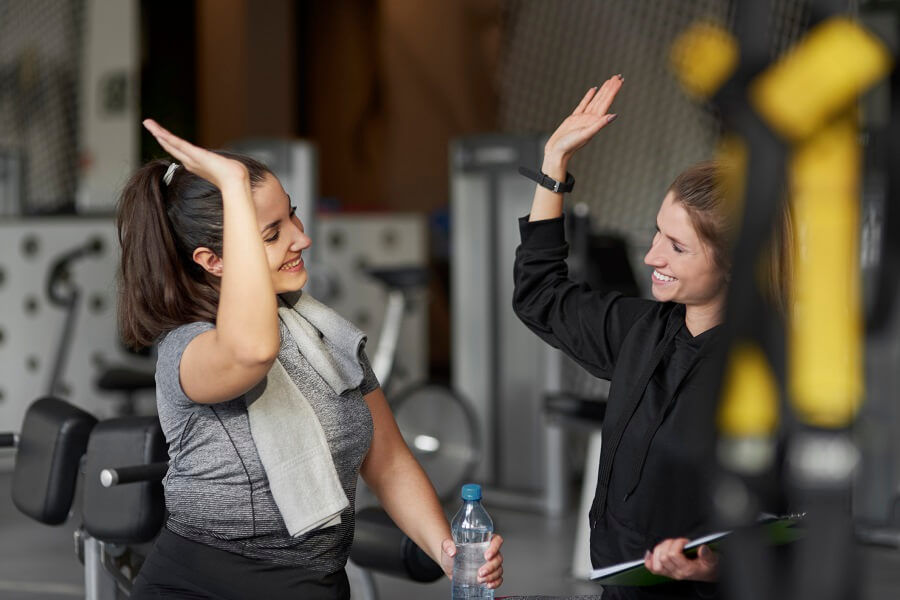Volleyball Workout Routines: What You Need to Know
Volleyball Workout Routines: What You Need to Know
Posted on: September 24, 2024 in RoutinesVolleyball is a popular sport among younger people, such as high school and college students. It’s easy to see why. It strikes the perfect balance between challenging and fun, and it allows you to socialize with others.
Volleyball combines many different elements, and to be good at it, you need to master those skills. That’s why creating an effective gym volleyball workout routine is vital to level up your game.
Who Is This Routine For?
This workout routine is for student volleyball players who want to improve their volleyball skills but need help knowing where to start. Entering a new gym can be intimidating, especially if you’re unfamiliar with the environment and unsure what to do.
We’ll help you create a volleyball workout plan that works for you. Stick with your volleyball exercises, and you might just be surprised at how much your volleyball build improves.
A Volleyball Exercise Plan & Gym Routine for Student Volleyball Players
If you’re new to working out at a gym, hiring a personal trainer to familiarize you with different gym equipment and exercises might be worth it. They will also help you with your individual goals.
However, a good starting point is to include the following activities in your volleyball exercise plan. They should cover most of your bases and help you develop the skills you need. You can adjust them as needed, performing more of some workouts and fewer of others depending on your strengths and weaknesses.
Strength Workouts
Volleyball uses many muscles, and the stronger these muscles are, the more explosive you can be on the court. Strong legs allow you to jump higher. Strong arms enable you to hit harder. A strong core helps you keep your balance.
During strength workouts, give adequate attention to all your muscle groups — especially significant muscles like your calves, quads, biceps, back and shoulders.
Here are some lower-body volleyball exercises:
- Squats: Squats are a staple in any gym program. They utilize a variety of muscles, and there are many squat variations that can target different weaknesses. You can also combine squats with other exercises — like an overhead press — to get even more out of your workout.
- Lunges: In volleyball, it’s essential to keep your balance on one leg, especially since you may jump or land using one leg. Lunges are a great way to improve single-leg strength and balance.
- Good mornings: This exercise is a great way to strengthen your lower body and increase your power when jumping. It involves standing up straight with your feet shoulder-width apart. Place your hands behind your head and slowly bend forward at the hip, sending your hips backward.
Some upper-body workouts include:
- Russian twists: Your core helps you stabilize on the court. Russian twists are a great way to work your core while practicing the twisting motion you may do mid-air.
- Push-ups: Your shoulders play a vital role in your volleyball performance, and push-ups are a great way to work those muscles. You can start with knee push-ups and slowly progress to more complex variations.
- Cable triceps pushdowns: People often neglect their triceps in upper body workouts, but you need to work on strengthening your entire upper body to be a better volleyball player. Including these pushdowns in your gym routine can be the push you need to become better than ever before. Face the high pulley on the machine and grasp the cable attachment, elbows positioned to the side. Extend your arms down and slowly move them back up, then repeat.
Depending on your preferences, you can incorporate these exercises into full-body strength workouts or split them up into upper-body and lower-body days. You can also swap exercises out for other exercises that target the same muscles.
Cardio Workouts
Since you will be running around on the volleyball court for a while, you need cardiovascular fitness, stamina and endurance. That’s why you should incorporate cardio into your volleyball workout routine and strength training.
There are many types of cardio workouts, ranging from walking to 20-minute high-intensity interval training (HIIT) sessions. It’s a good idea to incorporate a variety of cardio types into your workout routine.
Here are some cardio options:
- HIIT: HIIT incorporates short sprints of super-intense exercise followed by a period of rest. These workouts are usually relatively short because they push you to the max. Their short nature is great for those who need to exercise with a busy schedule.
- Jump training or plyometrics: You can combine plyometric and HIIT workouts, although not all HIIT exercises are plyometric. Plyometric workouts involve a lot of force and power, both of which can be valuable in your volleyball career.
- Low-impact cardio: It’s also a good idea to include low-impact cardio a few times a week. A gentle jog, swim or walk can improve overall cardiovascular strength. Low-impact cardio is a good option for rest days, as you’re still moving your body, but you’re not pushing yourself too much.
Mobility Workouts, Stretches and Rest Days
Finally, you can’t keep pushing yourself constantly, or you’ll burn out. Scheduling days for rest or lighter movement is crucial, as it allows your body to recover from the workouts you’ve done.
Try to include some of the following activities in your workout schedule:
- Mobility workouts: Because volleyball requires a lot of jumping and hitting, it’s a relatively high-impact sport. As such, it’s important to take proper care of your joints. Including a mobility day every now and then can make a world of difference. Yoga and Pilates are excellent for mobility.
- Stretches: It’s a good idea to include some warmup and cool-down stretches every time you work out, but it can also be nice to incorporate a workout dedicated solely to stretching out your muscles at least once a week. This feels great and reduces stiffness after workouts.
- Rest days: Rest days are essential for recovery, but you don’t have to refrain from movement completely. Instead, incorporate some gentle movements like walks, mobility workouts and stretches. Even if you’re not actively working out on your rest days, try to get up and move for a bit every hour.
Additional Things You Can Do to Stay in Shape for Volleyball
Having a volleyball workout routine is a great first step toward improving your performance, but there are a few other things you can do as well:
- Focus on your nutrition: Nutrition and exercise go hand in hand. If you want to get as much out of your workouts as possible, ensure you fuel your body with the nutrients it needs. Get enough protein to build your muscles and enough carbs to give you energy. A balanced diet can improve your life both on and off the volleyball court.
- Get enough sleep: Your workouts don’t help much if you fall asleep during a match. Teenagers need eight to 10 hours of sleep, and adults need at least seven. If you’re spending a lot of energy — such as playing a sport — you may even need more than that. Prioritize getting enough quality sleep.
- Drink enough water: Staying hydrated is vital for overall health, especially when exerting yourself during your volleyball matches and other workouts. Ensure you’re drinking enough water, especially when you’re doing intense workouts.
Ready to Launch Your Health and Fitness Transformation?
At 5 Bridges Health & Fitness, we care about helping you achieve your fitness goals. Whether that means joining a group fitness cardio session to keep you motivated or having a personal trainer develop a specialized plan, we can help you become the athlete you strive to be. Learn more about what we do and how we can help you.






